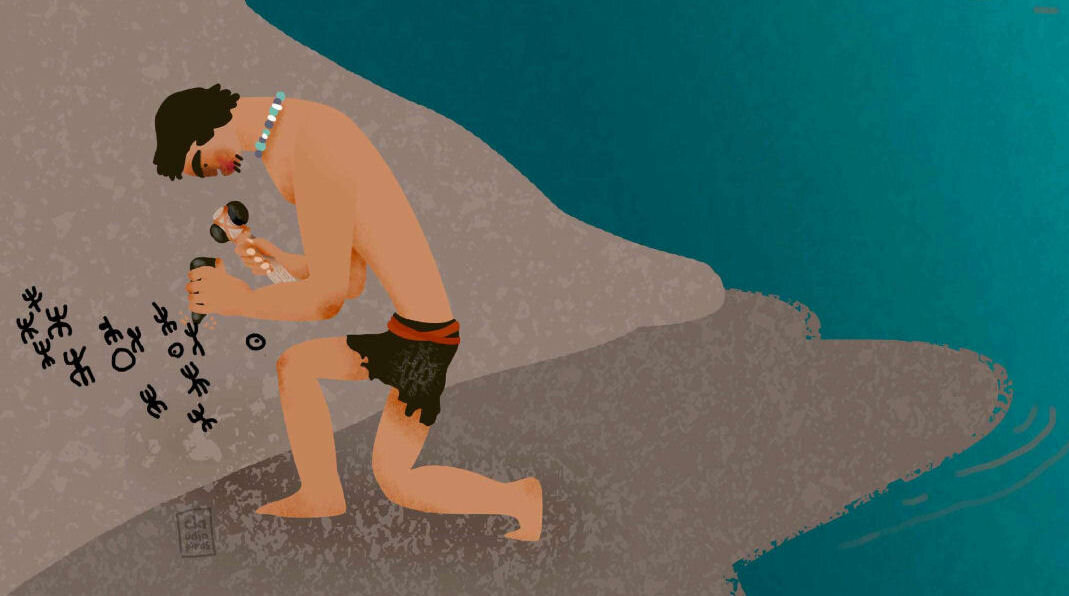The Bue Marino Cave is one of the main attractions for anyone exploring the Gulf of Orosei and wishing to learn more about the history and nature of this impressive part of Sardinia. Today, it is part of the second-longest karst system in Italy: an uninterrupted network of underground passages stretches about 72 km from the Supramonte of Urzulei to the crystal-clear waters of Cala Gonone (municipality of Dorgali). The cave owes its name to the marine mammal that inhabited it until the 1980s—the Mediterranean monk seal, locally called "Bue Marino" ("Sea Ox"). The Bue Marino Cave is an independent, complex karst system and is continuously the focus of research not only in speleology but also in geology and biology. It is divided into three different branches, each several kilometers long: the northern branch with over 10 km, the middle branch with an approximately 5 km long underwater gallery, and the southern branch, which stretches over 8 km and is currently the only one open to visitors. This southern branch also forms the physical connection to the karst system of Codula Ilune. The latter, through the connection of the four main entrances/caves Su Palu, Monte Longos, Su Molente, and Bue Marino, forms the longest underground cave structure in Sardinia. A special feature of the southern branch is the meeting of sea and river water about one kilometer from the cave entrance, creating landscapes in unique shades of color. The entire karst system lies in a limestone massif from the Jurassic period; the Bue Marino Cave itself is dated to about 4–6 million years ago. The cavity was shaped by a powerful underground river, the Ilune, which—swollen by its tributaries—at times completely flooded the passages and still does so in part today. Thanks to the strong erosive power of the freshwater in the limestone, the river was able to create such a wide and straight cave in the mountain over thousands of years, until it finally found its ultimate outlet to the sea. The numerous, majestic mineral formations along the visitor path were created by seepage water, mostly rainwater, as the river level fluctuated within the gallery—both before and after the opening to the sea. This means that the cave is still "active" today: you can find numerous stalactites with hanging drops, extensive, damp flowstone surfaces, terrace or rimstone pools with clear, crystalline water, and observe the concentric rings created by falling raindrops. The Bue Marino Cave is not only of great importance from a geo-naturalistic and biological point of view, but also from an archaeological and anthropological perspective. Petroglyphs from the Neolithic-Eneolithic period have been discovered on the outer rock wall. These rock carvings probably depict a cult scene: several praying, anthropomorphic figures are arranged around two discs, which can be interpreted as sun symbols. The petroglyphs are an essential testament to the cultural vitality and profound territorial knowledge of the early inhabitants.
The cave can be reached by sea from the port of Cala Gonone. Inside, there is a constant temperature between 16 °C and 18 °C. Accompanied by the emerald green sea and then by the calm river water, the visitor path leads over the first kilometer of the southern branch through the Sala dei Candelabri ("Hall of the Candelabra") with concretions hanging from the vault, the Sala degli Specchi ("Hall of Mirrors") with spectacular reflections, the Sala dell’Organo ("Organ Hall"), and finally the Sala della Foca ("Seal Hall"), where in the early 1980s the last pups of the Mediterranean monk seal were documented.

2025 Management Cooperative
© Lampu1 - VAT 01367790910
GROTTA DEL BUE MARINO

GROTTA DEL BUE MARINO
The Bue Marino Cave
The Bue Marino Cave
2025-09-14 11:38
2025-09-14 11:38
Array() no author 88439
die-bue-marino-hohle,

The Bue Marino Cave
2025 Management Cooperative
© Lampu1 - VAT 01367790910
